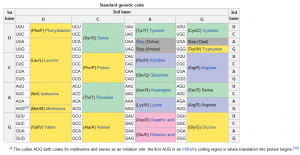Chimera [ki-meer–uh] usually defined as:
1. n. A mythological, fire-breathing monster, commonly represented with a lion’s head, a goat’s body, and a serpent’s tail. (source)
However, there is also a lesser known genetic definition:
2. n. An organism composed of two or more genetically distinct tissues, as an organism that is partly male and partly female, or an artificially produced individual having tissues of several species. (source)
Now this definition is applicable in the real world.

DNA to chromosome Image source
One type of chimerism is tetragametic chimerism. Tetragametic chimerism occurs when different sperm fertilizes two eggs. Two zygotes develop and then fuse together, this isn’t effected by gender difference. The remaining zygote has two distinct sets of DNA and therefore 46 pairs of chromosomes instead of the typical 23. When the fetus develops the organs have different DNA types, for example, their liver will have one set of DNA and their lungs the other set of DNA. Observable chimera phenotype characteristics are differences in the pigment of their eyes, hair and patches of skin, also a possibility of extraneous sexual organs.However, in humans the condition is rare, most have no presenting abnormal characteristics and live completely unaware.
Two infamous cases of tetragametic chimerism in humans are Karen Keegan and Lydia Fairchild.
Keegan needed a kidney transplant and her children were tested as potential matches. The results showed that only one of her three children was actually related to her. After extensive testing on Keegan’s different organ tissues researchers discovered, and published in 2002, that Keegan had 46 pairs of chromosomes and was a natural chimera.
In 2005, Fairchild discovered she had different DNA from her two children after DNA testing done to get welfare aid. She was accused of welfare fraud and threatened to have her children taken from her custody. When her third child was born and DNA testing was negative again, she was under the suspicion that she was lying as a surrogate or had acquired her children illegally. Only after presenting the published chimera paper on Keegan, Fairchild was tested and proven as a chimera as well.
Presently, scientists are researching if chimera organisms have better immunity or if the genetics can be used for future biological advances. Unnatural chimeras such as ‘geeps’, a fusion of a sheep and goat embryo, have already been successfully created as well as human and animal fused embryos. Using these hybrids, however, involves stem cell research and genetic engineering, which brings up major ethical problems and controversy in the scientific community.
So, we’ll never have mythological fire breathing creatures, but you have to admit it’s still pretty darn cool.
– Rachel Chang




